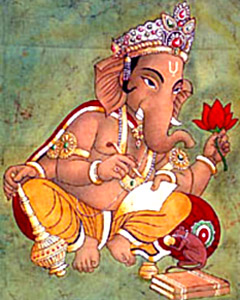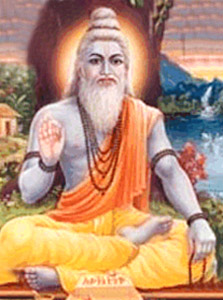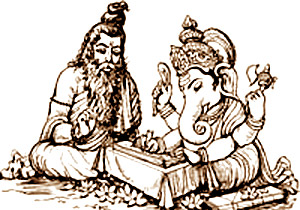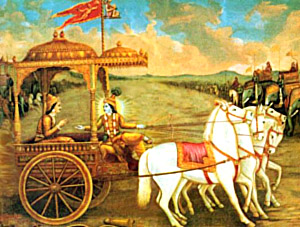Mahabharata is the longest Sanskrit epic which was composed to embody much of the essence of Indian culture. The story of Mahabharat mainly deals with the history of Pandavas and Kauravas. According to the Historical Context of Mahabharat, there were three authors for Mahabharat. It is being said that the three authors include the great saint Ved Vyasa, his disciple Vaisampayana and the story teller Ugrasravas. (Sutha pauranika)
 Historical Context of Mahabharata speaks that the core story of the whole epic is about a dynastic struggle for the throne of Hastinapura, the kingdom which was ruled by the Kuru clan. It is being mentioned that the two collateral branches of the family participated in the struggle. This struggle culminated into the great battle of Kurukshetra. The battle produced complex conflicts of kinship and friendship. History depicts that this Great Indian Epic was noted down by the God of writing and beginnings, Lord Ganesha or the elephant-headed god. In order to make the Mahabharata "firm as the fifth along with the four Vedas, On this sea-girt earth,
Historical Context of Mahabharata speaks that the core story of the whole epic is about a dynastic struggle for the throne of Hastinapura, the kingdom which was ruled by the Kuru clan. It is being mentioned that the two collateral branches of the family participated in the struggle. This struggle culminated into the great battle of Kurukshetra. The battle produced complex conflicts of kinship and friendship. History depicts that this Great Indian Epic was noted down by the God of writing and beginnings, Lord Ganesha or the elephant-headed god. In order to make the Mahabharata "firm as the fifth along with the four Vedas, On this sea-girt earth,
When the Mahabharata was spoken by the King of sages
Who possess unfading askesis and Truth,
Vinayaka wrote with the Mount Meru
As the cadjan leaf,
And His own tusk as the sharp stylus"
 The earliest layers of the story and the historical context of Mahabharata probably dates back to the late Vedic period of 8th century BC and it probably reached its final form by the time the Gupta period began during the 4th century AD. According to the Adi-parva of the Mahabharata the text was originally 8,800 verses when it was composed by Vyasa and was known as the Jaya (Victory), which later became 24,000 verses in the Bharata recited by Vaisampayana, and finally over 90,000 verses in the Mahabharata recited by Ugrasrava Sauti.
The earliest layers of the story and the historical context of Mahabharata probably dates back to the late Vedic period of 8th century BC and it probably reached its final form by the time the Gupta period began during the 4th century AD. According to the Adi-parva of the Mahabharata the text was originally 8,800 verses when it was composed by Vyasa and was known as the Jaya (Victory), which later became 24,000 verses in the Bharata recited by Vaisampayana, and finally over 90,000 verses in the Mahabharata recited by Ugrasrava Sauti.
In accord to the historical context of Mahabharata, it is traditionally credited to Vyasa, who was also one of the major dynastic characters within the epic. It is said that the epic was noted down by Ganesha, at the request of Vyasa to Vyathe great sage`s dictation. Ganesha agreed to write it only on condition that Vyasa never paused in his recitation. Vyasa agreed, provided Ganesha took the time to understand what was said before writing it down.
 Mahabharata is a collection of tales and legends including the fascinating story of a feud between two parts of a single Indian ruling family of the Bharata. The context of Mahabharat relate that the Ultimate Weapon is summoned, a weapon that if used will destroy the world of both matter and spirit. The epic expresses that shrinking from one`s moral duty, refusal to act even when it is most difficult to act, and egotistical attachment to one`s actions, all these human weaknesses pose the greatest dangers to survival of all individual.
Mahabharata is a collection of tales and legends including the fascinating story of a feud between two parts of a single Indian ruling family of the Bharata. The context of Mahabharat relate that the Ultimate Weapon is summoned, a weapon that if used will destroy the world of both matter and spirit. The epic expresses that shrinking from one`s moral duty, refusal to act even when it is most difficult to act, and egotistical attachment to one`s actions, all these human weaknesses pose the greatest dangers to survival of all individual.
Historical Precedence of Mahabharat goes with the context as Puranic literature presents genealogical lists associated with the Mahabharata narrative. However, the historicity of the Kurukshetra War is unclear. All matters relating to the historical context of Mahabharata are essayed in the Adi-parva of the great epic. Among the 18 Parvas of Mahabharat, Adi-parva is the Book of the Beginning. In this parva, the commencement of the Mahabharata with the Historical Context is rightly portrayed.
 The Mahabharata is an exposition on dharma including the proper conduct of a king, of a warrior and of a man living in times of calamity. In addition to that, Mahabharata also speaks of the persons seeking to attain emancipation from rebirth. According to the Historical Context of Mahabharat, the epic took about several centuries to come into shape. That particular period was the moment of transition from the religion of Vedic sacrifice to the sectarian, internalized worship of later Hinduism; conversely different sections of the poem express varying and sometimes contradictory beliefs.
The Mahabharata is an exposition on dharma including the proper conduct of a king, of a warrior and of a man living in times of calamity. In addition to that, Mahabharata also speaks of the persons seeking to attain emancipation from rebirth. According to the Historical Context of Mahabharat, the epic took about several centuries to come into shape. That particular period was the moment of transition from the religion of Vedic sacrifice to the sectarian, internalized worship of later Hinduism; conversely different sections of the poem express varying and sometimes contradictory beliefs.












